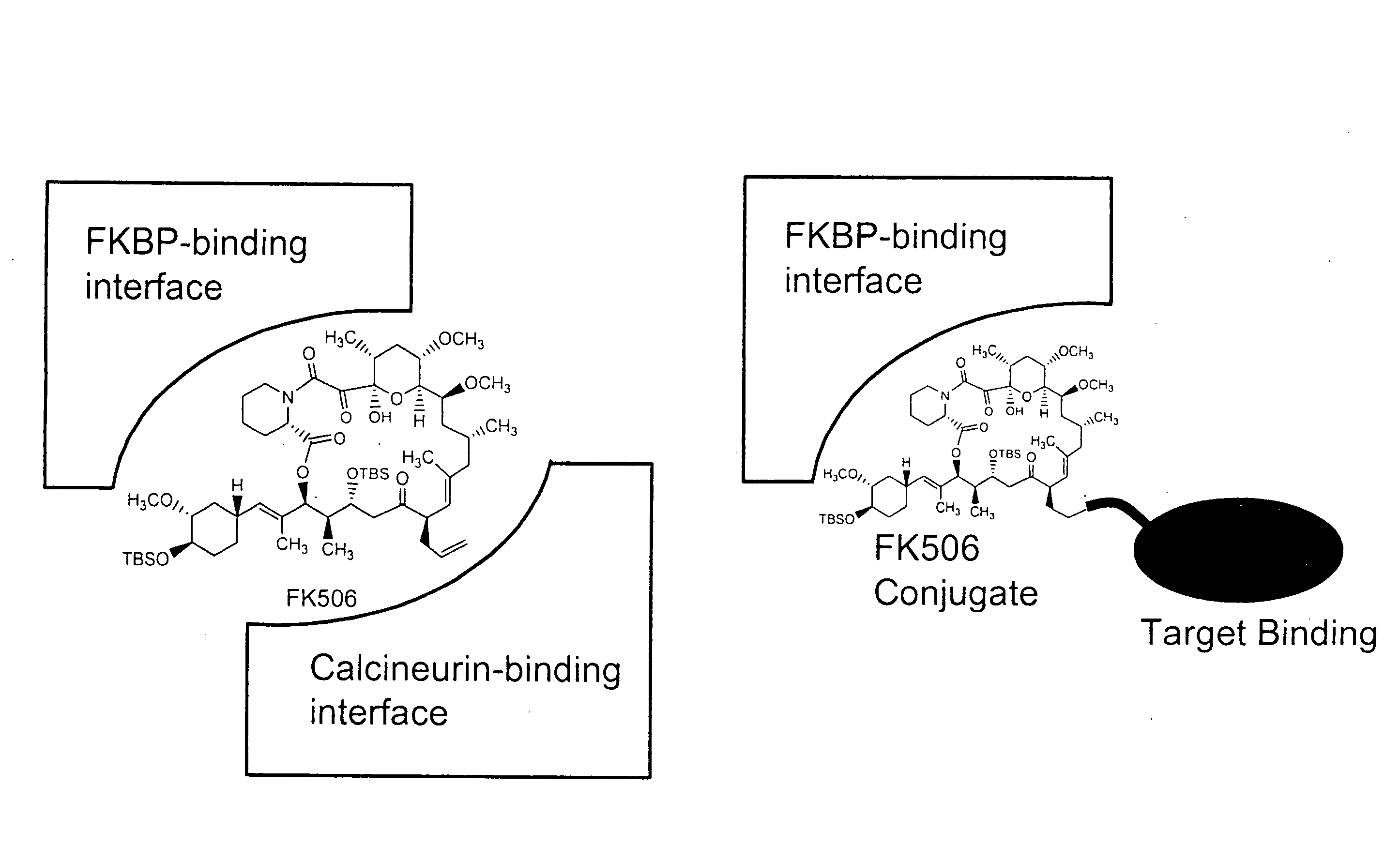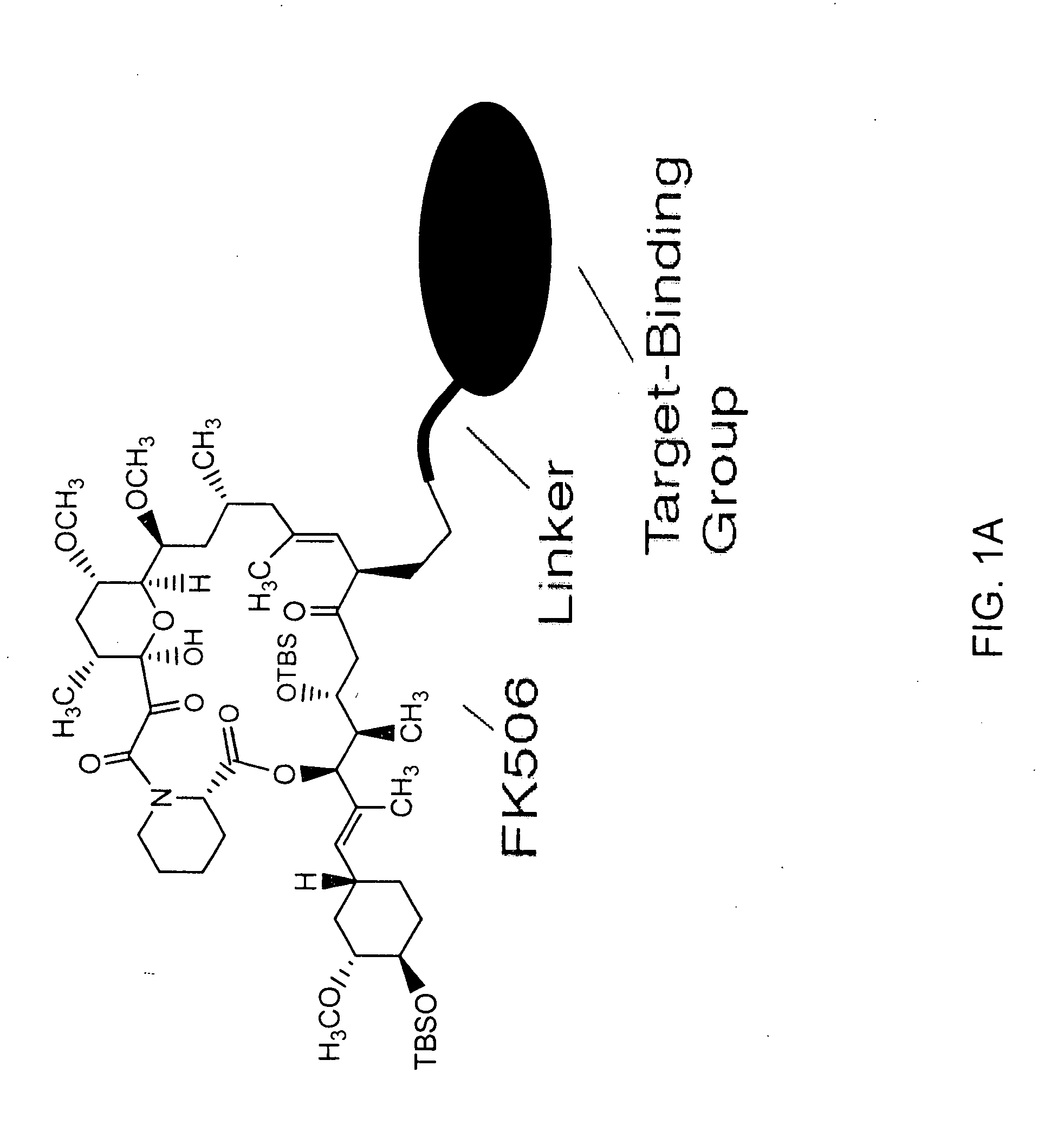Pharmacokinetics of protease inhibitors and other drugs
a protease inhibitor and pharmacokinetic technology, applied in the field of pharmacology, can solve the problems of not yielding an inhibitor that requires a substantially lower dose, not yielding an inhibitor that requires a substantial lower dose, and being relatively non-toxic compared with prior inhibitors
- Summary
- Abstract
- Description
- Claims
- Application Information
AI Technical Summary
Benefits of technology
Problems solved by technology
Method used
Image
Examples
example 1
FKBP Protection of Curcumin Conjugates
[0075]An amyloid ligand, curcumin, is known to be a good substrate for CYP3a4 (a common P450 enzyme). We investigated whether conjugates between curcumin and FK506 would also be substrates for the enzyme. To test this possibility, we utilized a well-known fluorescence-based CYP3a4 assay. This assay, marketed by Invitrogen (Carlsbad, Calif.), under the name VIVID probes, relies on cytochrome-mediated production of a fluorescent marker from a model substrate. When a compound, such as curcumin, binds to the P450, it displaces the substrate and reduces the rate of production of the fluorescent product. When we tested curcumin-FK506 conjugates in this assay, we found that both curcumin and the conjugate were good substrates for the enzyme. Thus, attachment of FK506 did not appear to significantly alter curcumin's susceptibility to degradation by CYP3a4. However, when we supplied a source of human FKBP (in this case, recombinant bacterially-expressed ...
example 2
Synthesis of Amprenavir Conjugate
[0076]The synthesis of a conjugate based on amprenavir proceeded as outlined below. FIG. 6 depicts the overall synthesis. Briefly, a commercially available Phe-derived epoxide is opened with a valine isostere. The resulting compound is coupled to Boc-protected aminobenzenesulfonyl chloride. Deprotection of the Boc groups is followed by coupling to an activated acid derivative of SLF using 1-ethyl-3-(3-dimethylaminopropyl) carbodiimide hydrochloride (EDC) and N-hydroxylsuccinimide (NHS) (10 equivalents EDC to 1 equivalent NHS). The coupling takes place in dimethylformamide (DMF) at room temperature over four hours. Relative nucleophilicity of the two amines is used to direct amide formation; the benzyl amino group is believed to have diffuse electron density and lowered reactivity. We carried out water work-up and flash chromatography on silica gel using 1:1 ethyl acetate:MeOH. Overall yield was very roughly 15%.
[0077]The linkers shown in FIG. 5 may b...
examples 3-4
Synthesis of Lopinavir and Ritonavir Conjugates
[0079]The syntheses of two additional P1-FK506 conjugates may proceed in a fashion generally similar to that employed for the amprenavir-based molecule, as shown in FIGS. 7A-7B. An advanced “Phe-Phe” intermediate 1 can serve as a common precursor for both the lopinavir- and ritonavir-based compounds. Amide formation with one of two carboxylates provides the branch point for the two schemes. In both cases, Boc deprotection provides a handle for creation of the amide with FK506. Various linkers of FIG. 5 may be employed to provide additional diversity and desirable characteristics. Because the linkers are installed on the FK506 moiety, a common pool of FK506-linker molecules may be used on all three synthetic schemes.
PUM
| Property | Measurement | Unit |
|---|---|---|
| molecular weight | aaaaa | aaaaa |
| molecular weight | aaaaa | aaaaa |
| heat shock | aaaaa | aaaaa |
Abstract
Description
Claims
Application Information
 Login to View More
Login to View More - R&D
- Intellectual Property
- Life Sciences
- Materials
- Tech Scout
- Unparalleled Data Quality
- Higher Quality Content
- 60% Fewer Hallucinations
Browse by: Latest US Patents, China's latest patents, Technical Efficacy Thesaurus, Application Domain, Technology Topic, Popular Technical Reports.
© 2025 PatSnap. All rights reserved.Legal|Privacy policy|Modern Slavery Act Transparency Statement|Sitemap|About US| Contact US: help@patsnap.com



